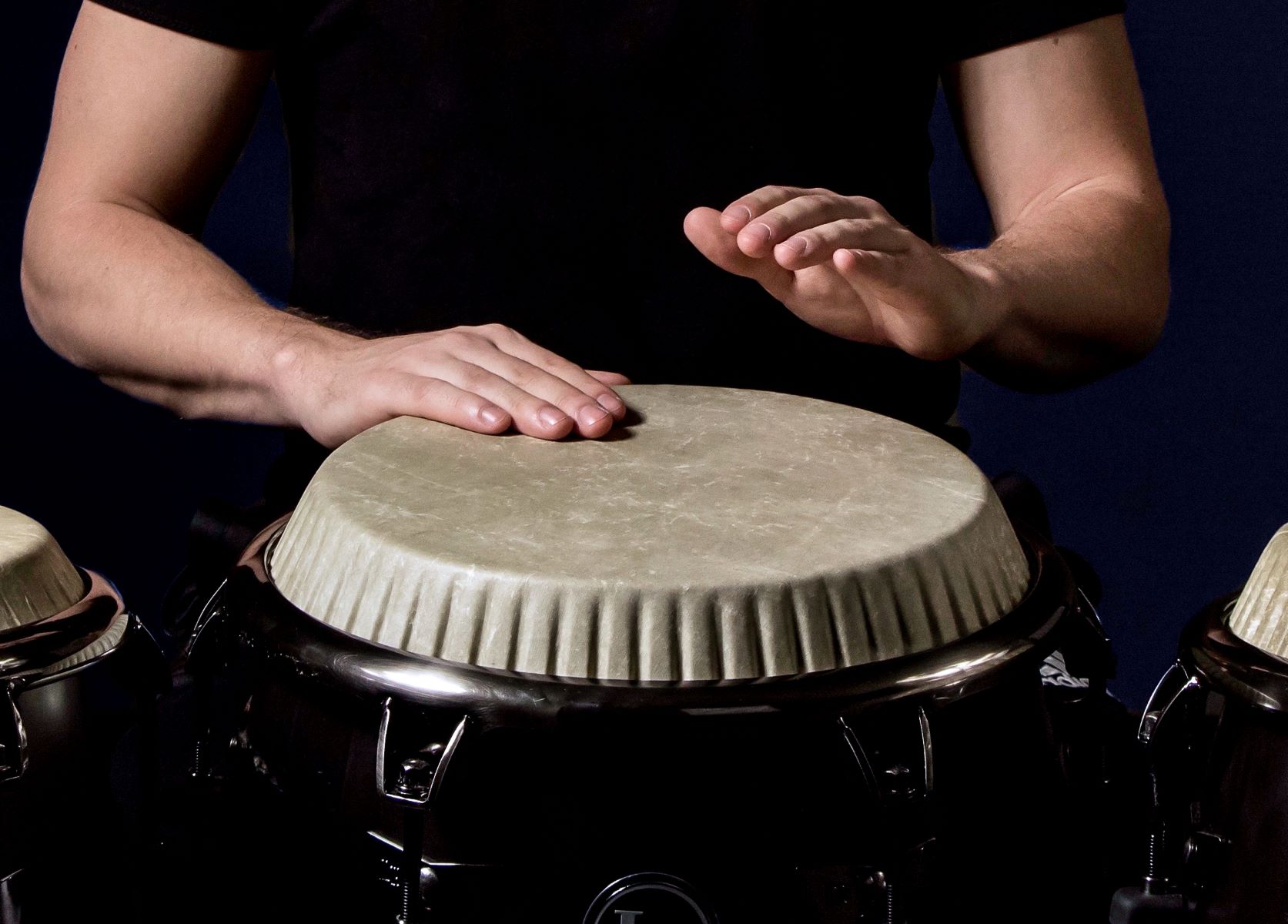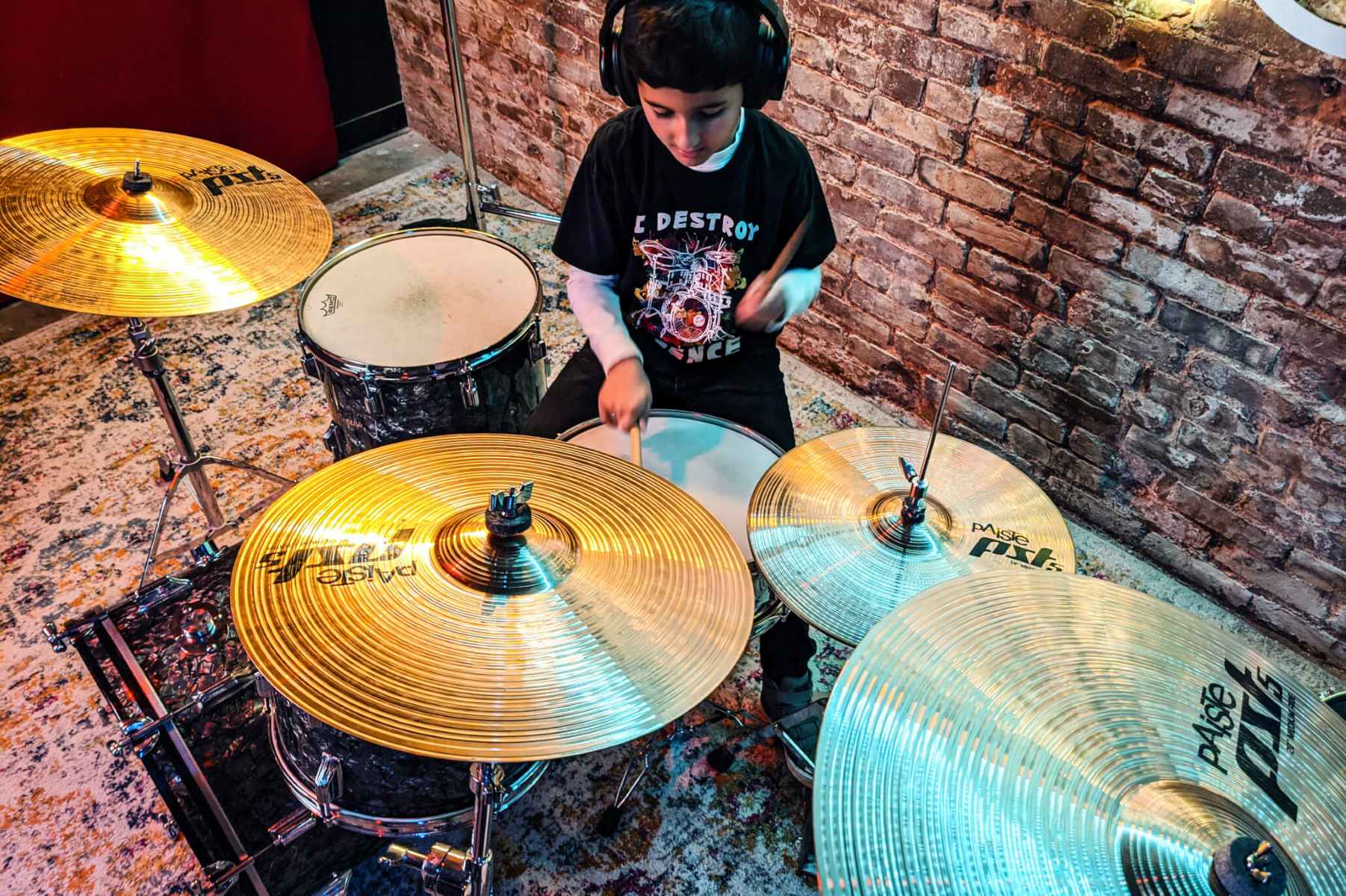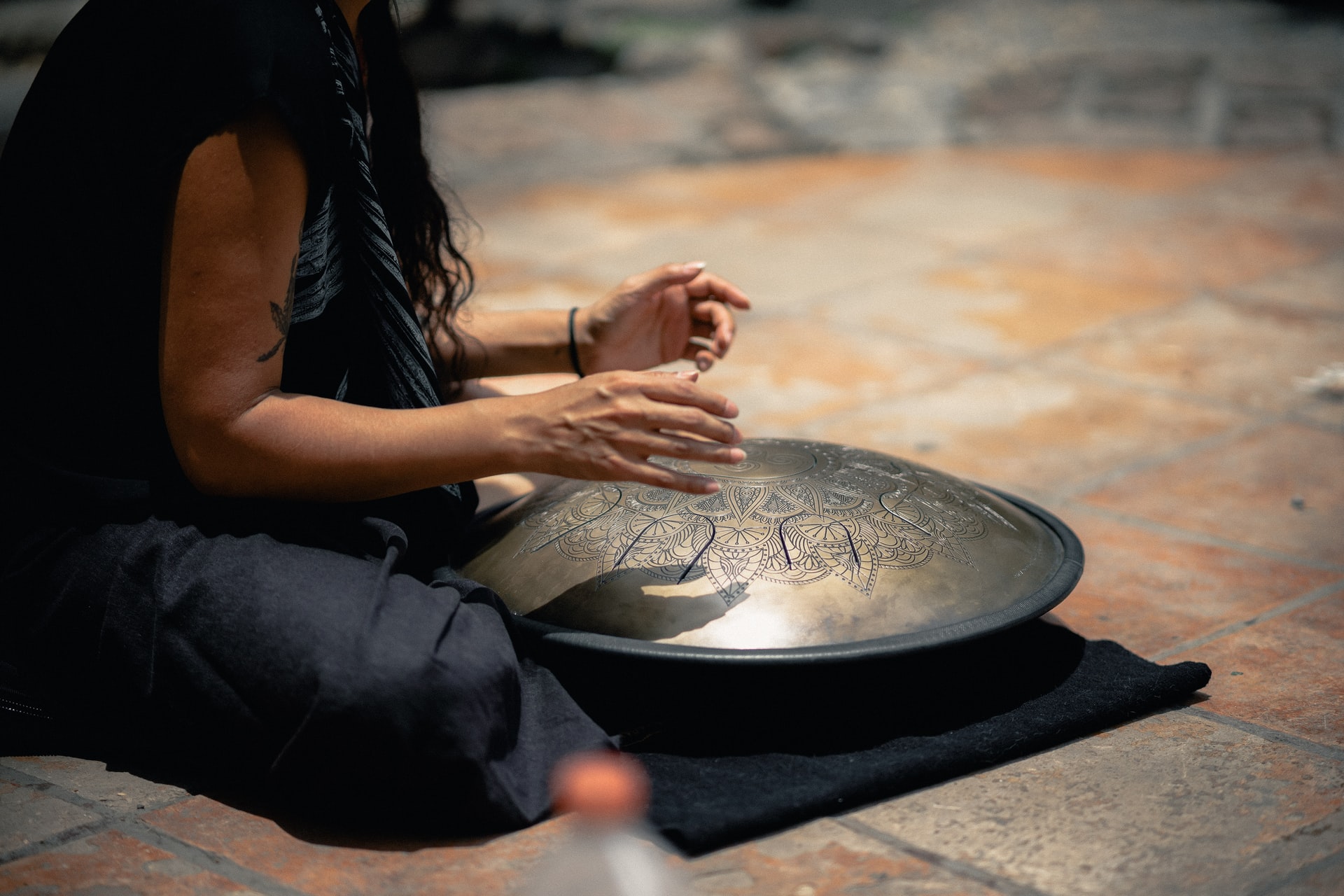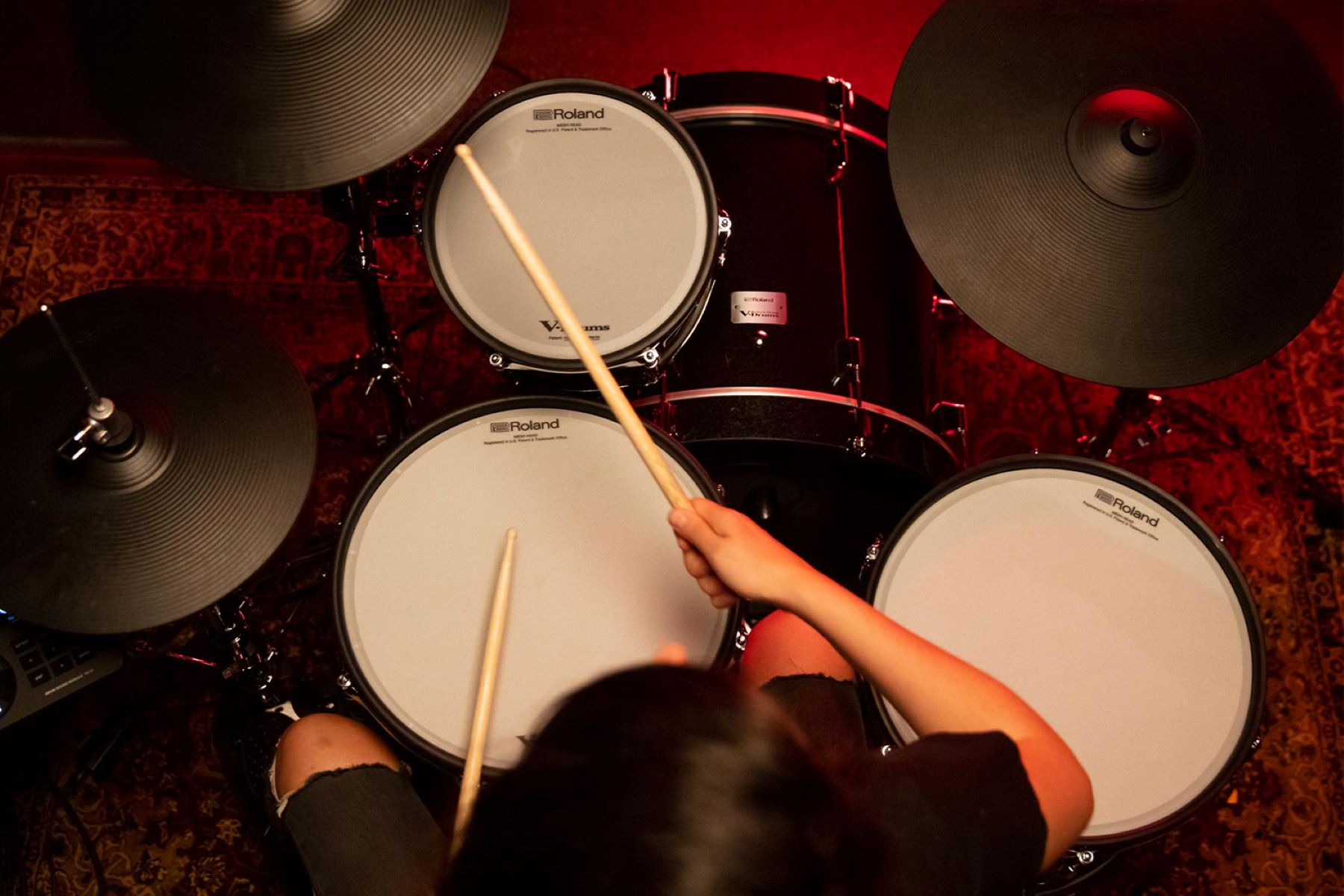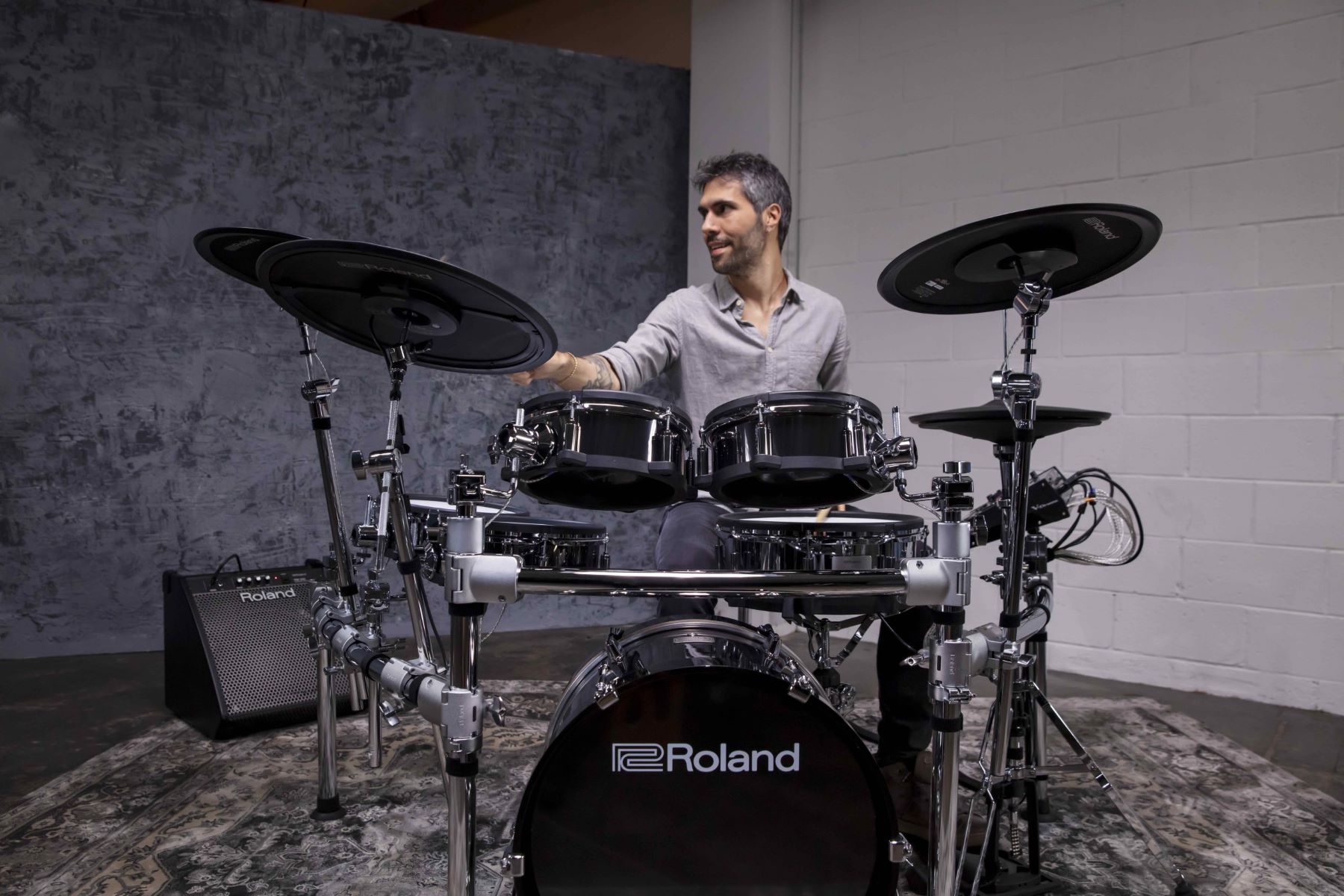Home>Instruments>Drums>How To Play “Boulevard Of Broken Dreams” On Drums


Drums
How To Play “Boulevard Of Broken Dreams” On Drums
Published: February 7, 2024
Learn how to play "Boulevard of Broken Dreams" on drums with our step-by-step tutorial. Master the drum beats and improve your skills today!
(Many of the links in this article redirect to a specific reviewed product. Your purchase of these products through affiliate links helps to generate commission for AudioLover.com, at no extra cost. Learn more)
Table of Contents
Introduction
Introduction
Playing the drums is an exhilarating experience, allowing you to express yourself through rhythm and energy. One of the most iconic and beloved songs for drummers to learn is “Boulevard of Broken Dreams” by Green Day. This timeless track features a compelling drum part that showcases both restraint and power, making it a fantastic piece for drummers of all levels to master.
In this guide, we will break down the essential steps to playing “Boulevard of Broken Dreams” on drums. From setting up your drum kit for the best sound to dissecting the song’s structure and mastering the signature drum beat, we will cover everything you need to know to bring this classic track to life through your drumming.
Whether you’re a beginner eager to learn a new song or an experienced drummer seeking to expand your repertoire, this guide will provide you with the knowledge and techniques to tackle “Boulevard of Broken Dreams” with confidence and finesse. So, let’s dive in and embark on this exciting drumming journey together!
Setting Up Your Drum Kit
Setting Up Your Drum Kit
Before delving into learning the drum part for “Boulevard of Broken Dreams,” it’s crucial to ensure that your drum kit is set up optimally for playing this song. Proper drum kit arrangement not only affects your comfort and ease of playing but also contributes to the overall sound and dynamics of your performance.
Start by positioning your drum throne at a height where your legs form a 90-degree angle when seated. This posture promotes good posture and allows for fluid movement around the drum kit. Next, adjust the height and angle of your drum pedals to match your natural foot position, ensuring that you can play with power and precision without straining your legs.
When it comes to the drums themselves, pay attention to their placement. The snare drum should be centered in front of you, roughly at hip level, allowing for comfortable and efficient rimshots and cross-stick playing. Position the toms within easy reach, angled slightly towards you for optimal striking. The bass drum pedal should align with the center of the bass drum head, facilitating consistent and powerful kick drum strokes.
Equally important is the positioning of your cymbals. The hi-hat cymbals should be placed to the left of the snare drum, with the top cymbal at a height that allows for smooth foot control. The ride cymbal, often prominent in “Boulevard of Broken Dreams,” should be within comfortable reach to your right, enabling seamless transitions between drum patterns and cymbal accents.
Finally, take a moment to assess the overall ergonomics of your drum kit setup. Ensure that your drumsticks are within easy reach and that your posture remains relaxed and balanced as you play. By arranging your drum kit thoughtfully and ergonomically, you set the stage for a more enjoyable and effective practice session as you embark on mastering “Boulevard of Broken Dreams” on drums.
Understanding the Song Structure
Understanding the Song Structure
Before diving into the specific drum patterns of “Boulevard of Broken Dreams,” it’s essential to grasp the song’s overall structure. Understanding the arrangement and flow of the song will not only aid in learning the drum part but also provide valuable insight into how the drums contribute to the song’s dynamics and emotion.
“Boulevard of Broken Dreams” follows a classic rock song structure, typically consisting of an intro, verse, chorus, bridge, and outro. The song begins with a distinctive guitar arpeggio that sets the mood before launching into the first verse. As the vocals and instrumentation progress, the chorus serves as a powerful and memorable focal point, often characterized by heightened energy and impactful drum accents.
Within the song’s structure, pay attention to the transitions between sections. Notice how the dynamics shift between the subdued verses and the anthemic choruses, and observe any instrumental breaks or interludes that provide opportunities for drum fills and variations. By familiarizing yourself with the song’s structure, you’ll gain a deeper appreciation for the drum part’s role in shaping the song’s narrative and impact.
Furthermore, consider the song’s tempo and feel. “Boulevard of Broken Dreams” maintains a steady, mid-tempo groove, allowing for a compelling balance of restraint and intensity. This consistent tempo provides a stable foundation for the drum part, enabling you to lock in with the band and drive the song forward with precision and groove.
By immersing yourself in the song’s structure and feel, you’ll be better equipped to approach the drum patterns with musicality and awareness, ultimately enhancing your ability to deliver a captivating and cohesive performance of “Boulevard of Broken Dreams.”
Learning the Main Drum Beat
Learning the Main Drum Beat
As you embark on mastering “Boulevard of Broken Dreams” on drums, the central drum beat serves as the rhythmic foundation that propels the song forward. This main drum pattern, often referred to as the groove or backbeat, is integral to capturing the song’s essence and driving its momentum.
The main drum beat for “Boulevard of Broken Dreams” revolves around a steady, alternating pattern between the snare drum and bass drum, complemented by crisp hi-hat articulation. Begin by focusing on the foundational groove, which typically consists of a straightforward 4/4 time signature. The kick drum provides a solid downbeat pulse on beats 1 and 3, while the snare drum delivers a compelling backbeat on beats 2 and 4, creating a sense of rhythmic push and pull.
Accentuating the main beat with the hi-hat cymbals adds texture and drive to the groove. Employ a controlled yet lively motion with your hi-hat foot, producing crisp, consistent strokes on the offbeats to infuse the rhythm with a dynamic, pulsating feel. This interplay between the snare, kick, and hi-hat forms the core of the song’s groove, anchoring the instrumentation and vocals with unwavering rhythmic support.
While mastering the main drum beat, pay close attention to the nuances of dynamics and feel. “Boulevard of Broken Dreams” thrives on a balance of restraint and intensity, requiring drummers to maintain a solid, unwavering pulse while infusing the groove with subtle fluctuations in volume and articulation. Embrace the song’s emotive quality and seek to embody its introspective yet powerful essence through your drumming.
As you internalize the main drum beat, focus on achieving a seamless and symbiotic connection with the song’s structure and mood. Your ability to lock in with the band and channel the song’s emotional depth through the main drum beat will elevate your performance, ensuring that you capture the heart and soul of “Boulevard of Broken Dreams” with every rhythmic stroke.
Adding Fills and Variations
Adding Fills and Variations
While the main drum beat forms the rhythmic backbone of “Boulevard of Broken Dreams,” incorporating well-placed fills and variations elevates the drumming to new heights, adding flair and excitement to the song’s progression. Fills and variations serve as expressive punctuation marks within the song, enhancing transitions between sections and injecting moments of rhythmic creativity.
Begin by identifying opportune moments within the song’s structure to introduce fills and variations. The space between verses and choruses, as well as leading into instrumental breaks or the outro, presents ideal opportunities to infuse the drumming with tasteful embellishments. By recognizing these strategic openings, you can seamlessly integrate fills and variations without overpowering the song’s overarching groove.
When crafting fills, consider the musical context and the song’s emotional trajectory. Tailor your fills to complement the song’s dynamics, opting for more subdued and textural fills during introspective verses and building towards more expansive and impactful fills as the song progresses towards its climactic moments. This thoughtful approach ensures that your fills enhance the song’s narrative, amplifying its impact with each rhythmic flourish.
Experiment with a variety of fill patterns, drawing inspiration from your favorite drummers and exploring different rhythmic motifs. Incorporating tom-tom flourishes, snare drum rolls, and cymbal accents can add depth and dimension to your fills, allowing you to showcase your creativity while honoring the song’s musical identity. Strive to strike a balance between precision and spontaneity, infusing your fills with a sense of purpose and musicality.
Furthermore, embrace the opportunity to introduce subtle variations to the main drum beat, injecting fresh energy and intrigue into the song’s rhythmic landscape. Consider altering the hi-hat pattern, introducing ghost notes on the snare, or incorporating syncopated kick drum patterns to add subtle twists and turns to the groove. These nuanced variations serve to captivate listeners and fellow musicians, enriching the overall sonic tapestry of the song.
By artfully integrating fills and variations that complement the song’s structure and emotional journey, you will elevate your drumming performance, infusing “Boulevard of Broken Dreams” with an extra layer of rhythmic vitality and expression.
Playing Along with the Full Song
Playing Along with the Full Song
As you near the culmination of your journey to master “Boulevard of Broken Dreams” on drums, the ultimate test of your proficiency and musicality lies in playing along with the full song. This transformative experience not only solidifies your understanding of the drum part but also allows you to immerse yourself in the song’s emotive landscape, forging a profound connection between your drumming and the musical narrative.
Before diving into playing along with the full song, take a moment to internalize the song’s dynamics, structure, and feel. Familiarize yourself with the subtle nuances of each section, from the introspective verses to the anthemic choruses, and envision how your drumming will interweave with the song’s instrumentation and vocals. This preparatory step sets the stage for a cohesive and compelling performance.
When you’re ready to play along, focus on maintaining unwavering precision and groove while channeling the song’s emotional depth through your drumming. Stay attuned to the ebb and flow of the song, adjusting your dynamics and articulation to mirror the evolving intensity and introspection encapsulated within “Boulevard of Broken Dreams.” This mindful approach ensures that your drumming resonates with the song’s essence, enriching the overall musical tapestry.
As you navigate through the song, pay close attention to the transitions between sections, seamlessly executing fills and variations at strategic junctures to accentuate the song’s narrative arc. Embrace the opportunity to infuse your drumming with passion and authenticity, allowing your rhythmic contributions to amplify the song’s emotional impact and captivate the listener’s ear.
Playing along with the full song provides an invaluable opportunity to refine your musical instincts and ensemble awareness, strengthening your ability to lock in with the band and propel the song forward with unwavering conviction. Embrace the symbiotic relationship between your drumming and the song, embodying the spirit of “Boulevard of Broken Dreams” through each nuanced stroke and rhythmic gesture.
By immersing yourself in the full song and embracing the profound connection between your drumming and the musical narrative, you will not only solidify your mastery of “Boulevard of Broken Dreams” on drums but also cultivate a deeper appreciation for the transformative power of rhythm and expression within music.



